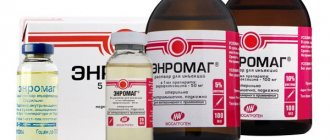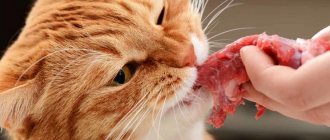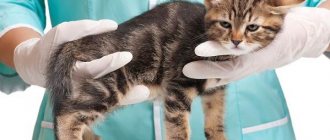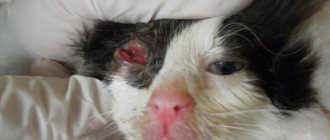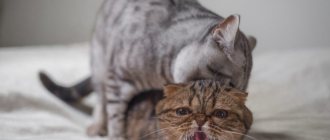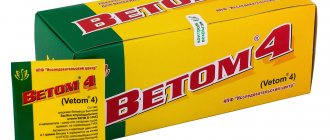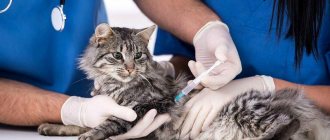Save the article:
There are diseases among our smaller brothers that require treatment with a potent human remedy. Of course, such drugs are not used in equivalent dosages, but in much smaller ones. Today it would be useful to learn about how ceftriaxone is used for cats, why and how best to do it.
Indications for use
The drug must be prescribed by a specialist, and he will do this only for a serious indication for the treatment of a pathological disease.
global $ads_google; //data-ad-slot=”2475549904″ $ads_google = empty($ads_google) ? false : true; ?> if ($ads_google == false) {?>
$ads_google = true; ?> } ?>
Cats can also catch pneumonia and bronchitis, get otitis media, genitourinary diseases, and get E. coli. Similar diseases caused by various types of cocci are susceptible to the action of ceftriaxone. It is prescribed if the illness is caused by an infection or bacteria that are sensitive to the medicine.
An antibiotic is also prescribed if there are wounds, sepsis, or inflammation. You can use the drug after surgery, in case of a viral disease, so that a bacterial complication does not occur.
The drug is active against staphylococci, streptococci, pneumococci, and E. coli.
You can understand why the medicine is so in demand among cat lovers. In each case, a different treatment regimen for the cat with ceftriaxone is selected.
Purpose
Given the wide spectrum of antibacterial action, veterinarians prescribe Ceftriaxone for the treatment of the following diseases:
- pneumonia, bronchitis and other respiratory diseases;
- otitis;
- sepsis;
- cystitis and other infectious diseases of the genitourinary system;
- pathologies of the liver, biliary tract;
- chlamydia;
- osteomyelitis and other bacterial pathologies of the musculoskeletal system;
- soft tissue infections;
- diseases of the gastrointestinal tract of a bacterial nature;
- meningitis, etc.
In the postoperative period and after serious viral diseases, Ceftriaxone will help to avoid complications - the development of secondary bacterial infections. In addition, the antibiotic is prescribed for serious damage to the skin - for the treatment of wounds and the prevention of sepsis.
Pneumonia and bronchitis in cats
Pneumonia in pets is a serious disease of the respiratory system that can have life-threatening complications for the animal. The pathology may be accompanied by the accumulation of fluid and pus in the lungs, causing breathing problems and a general deterioration in health.
Most often, the pathology affects small kittens and older animals whose immunity is weakened. Treatment involves the mandatory use of antibiotics, and Ceftriaxone is the number one drug in the fight against infection. However, antibiotic therapy can only be carried out as prescribed by a veterinarian: after examination and clinical tests, he will choose the drug that is most effective against the causative agent of the pathology.
The cause of the inflammatory process in the lungs can even be ordinary hypothermia. But most often pathology is caused by pathogenic microorganisms - viruses, bacteria or fungi. In addition, so-called lungworms can parasitize your pet’s body. In the process of life, they release dangerous toxins that cause dysfunction not only of the respiratory system, but also of other body systems.
Important!
Inflammation of the lungs can be a consequence of acute respiratory or immunodeficiency diseases, or the penetration of a foreign object into the trachea, causing sepsis.
Pneumonia without treatment can lead to serious complications - chronic bronchitis, pulmonary edema. A severe form of pathology can lead to the destruction of part of an organ, which ultimately causes respiratory or heart failure, infectious-toxic shock. Toxins accumulate in the body, which increases the load on the liver and kidneys, which cannot cope with their function of removing toxins from the body. Pneumonia can be fatal, especially in kittens – their bodies are not always able to cope with such serious complications.
Symptoms of pneumonia:
- increased body temperature;
- refusal to eat;
- lethargy, depressed state;
- dry nose;
- increased thirst.
As the pathology develops, characteristic signs will be observed: cough - first dry, then with sputum, fever, mucus discharge from the nose, increased salivation, cyanosis - blue discoloration of the mucous membranes. Due to difficulty breathing, the cat keeps its mouth slightly open and sticks out its tongue. When coughing, your pet may feel pain in the lungs, so it meows pitifully. If you don’t let it get to this point and contact a veterinarian at the first suspicion of a disease, the chances of a quick and successful cure are very high. To quickly combat the infection, veterinarians prescribe antibiotics, including Ceftriaxone.
Release form and composition
If in a conversation with a veterinarian we are talking about the antibacterial drug ceftriaxone, it means that the cat’s body is severely affected, and treatment must be started immediately. Bioavailability is high, and the effect begins within two hours after administration of the drug. In what form is the drug released?
Only injection powder can be purchased for administration to cats. Packaging from the manufacturer in bottles of 250, 500, 1000 or 2000 mg of active ingredient (sodium salt).
To dilute ceftriaxone, you need water for injection and an anesthetic like lidocaine.
The owner of the animal must understand that injections are very painful for cats, so you can dilute ceftriaxone powder with 0.5% novocaine. You can also take lidocaine, but there are allergic reactions to it, including heart and breathing problems. If you take only water, without painkillers, then this means dooming your pet to severe pain.
One bottle of ceftriaxone (1 g) requires the administration of 5 ml of novocaine (0.5%). The product is mixed and a beautiful, homogeneous yellow solution is obtained.
The remaining solution of the antibiotic ceftriaxone from the administration is only thrown away; it cannot be stored.
Pharmacokinetics
The pharmacokinetic properties of ceftriaxone, a third generation cephalosporin, were studied in five cats.
after a single intravenous, intramuscular and subcutaneous administration at a dose of 25 mg/kg. Ceftriaxone MICs have been determined for some Gram-positive and negative strains isolated from clinical cases.
The predictor of efficacy (t>MIC) was also calculated. Serum distribution of ceftriaxone was best fit in two-component and single-component open-label models with first-order elimination after intravenous and intramuscular and subcutaneous administration, respectively. After intravenous administration, distribution was rapid (t1/2d 0.14 ± 0.02 h) and moderate, as reflected in the volume of distribution (Vd (cc)) 0.57 ± 0.22 l/kg. In addition, elimination was rapid with plasma clearance of 0.37 ± 0.13 L/h•kg and t1/2 of 1.73 ± 0.23 h. Peak serum concentration (Cmax), tmax, and bioavailability for intramuscular administration were 54 .40 ± 12.92 μg/ml, 0.33 ± 0.07 h and 85.72 ± 14.74%, respectively; and for the subcutaneous route the same parameters were 42.35 ± 17.62 μg/ml, 1.27 ± 0.95 h and 118.28 ± 39.17%. The MIC of ceftriaxone for gram-negative bacteria ranged from 0.0039 to >8 μg/ml, and for gram-positive bacteria from 0.5 to 4 μg/ml t>MIC ranged from 83.31–91.66% (10–12 h) from the recommended dosing interval (12 h) for E. coli (MIC90 = 0.2 μg/ml).
How it works
The drug is used for 7-10 days in a row with a single administration once a day.
As a standard, the medicine is stopped administered three days after the temperature returns to normal and all symptoms of the disease disappear. The course of treatment cannot be interrupted, even if there is a visible improvement in the pet’s condition, remember that this is an antibiotic!
It happens that injections have been administered for 3-5 days, but there is still no result, or even the cat’s condition has begun to worsen. There is no need to wait; with such serious problems, see a doctor immediately!
When is it prescribed?
The drug is used to treat infectious inflammations.
Cats are prescribed Ceftriaxone to treat various infectious pathologies. It perfectly treats chlamydia, sepsis, prevents infection during surgical interventions and helps to recover faster after surgical treatment of urolithiasis. Veterinarians prescribe AB to a kitten who has cystitis, otitis, meningitis and infections of the respiratory system of bacterial etiology. In addition, it is advisable to give Ceftriaxone injections in case of infectious lesions of soft tissues and skin.
Instructions for use of Ceftriaxone
The instructions for using the medication are simple; every cat owner can handle it.
How to dilute the medicine
Let's study the instructions for using ceftriaxone:
- for 1 g of antibacterial agent add 3.6 ml of water for injection or novocaine;
- the liquid is injected with a syringe by piercing the rubber cap of the bottle;
- the powder is dissolved by vigorously shaking the bottle until completely homogeneous;
- the needle must be replaced with a new one;
- the medicine is administered intramuscularly, it is worth learning
how to give the injection correctly .
The antibiotic is used immediately after stirring!
How to inject ceftriaxone into a cat
A syringe is taken with a thin needle, preferably an insulin one. Subcutaneous injection is unacceptable, and every cat owner knows where to inject. If all the actions are shown clearly by the veterinarian at the appointment, this will solve the problem. If you have to prick a cat yourself, it is better to learn how it is done.
The pet should be properly secured, so it is advisable to work with someone in pairs. After this, the needle is inserted into the femoral muscle on the hind leg, the insertion angle is 45°C. The drug is administered slowly!
As soon as the needle is removed, the cat is no longer restrained; it must be calmed down, otherwise each subsequent angle will become even more stressful.
global $ads_google; //data-ad-slot=”2475549904″ $ads_google = empty($ads_google) ? false : true; ?> if ($ads_google == false) {?>
$ads_google = true; ?> } ?>
Due to the pain of the procedure, you can alternate between the hind legs and the triceps brachii muscle. You can combine ceftriaxone treatment with sedatives if your veterinarian approves this decision.
If you visit a doctor in a timely manner, you can prevent the development of serious diseases. Then you won’t have to inject the cat with the antibiotic ceftriaxone.
Owner reviews
Never use ceftriaxone without a doctor's prescription, just like any other antibiotic.
This is due to the fact that antibiotics can lead to the development of serious complications, including the development of anaphylactic shock. Alisa
https://ligapethelp.org/forum/viewtopic.php?f=57&t=4399
Ceftriaxone is not the best choice for the treatment of chronic cystitis, especially since it takes a long time to be treated, before “clean” tests.
ele4011
https://www.zoovet.ru/forum/?tid=7&tem=975182
Ceftriaxone is very painful; it is diluted with novocaine 3 ml per gram of powder.
After the injection, you need to massage the muscle and pat it. And alternate paws. So that you always stab at more than one. Well, hold it tighter when inserting. There are two people to do the injection, one holds, the other injects. After the injection, he may limp, walk on three legs, and whine. Shv-dmitry
https://www.zoovet.ru/forum/?tid=7&tem=725134
Ceftriaxone diluted with lidocaine cannot be administered intravenously!!!
Dosage from 30–50 mg/kg. It is easier to dilute with 4 ml of solvent (2 ml of water + 2 ml of lidocaine) and then calculate the dosage per animal. You can store the diluted bottle for 1 day (no more!) by placing it in the refrigerator door. Lyalya
https://ligapethelp.org/forum/viewtopic.php?f=57&t=4399
and my doctor forbade diluting it with Lidocaine - it’s not for cats... I understand: painful injections - but you need to dilute it with saline solution.
pers16
https://www.zoovet.ru/forum/?tid=7&tem=975182
I still advise you to make a new solution each time, because for a cat the injection is already very painful.
Is it really worth subjecting a cat to such torture if the effectiveness of the medicine has already decreased significantly over time? Moreover, this drug is very inexpensive Myaomura
https://irecommend.ru/content/tseftriakson-koshke-kak-razvodit-kak-kolot-chtoby-bylo-ne-bolno
Contraindications
Ceftriaxone for cats is usually well tolerated, but, nevertheless, owners should not forget about contraindications. These are diseases of the genitourinary system, as well as stomach and duodenal ulcers.
Pregnant and postpartum cats should not be treated with such a strong remedy until the end of the lactation period.
There are no other serious contraindications.
Side effects and overdose
The drug ceftriaxone also has side effects. The body's reaction can be expressed in:
- disruption of the functioning of the digestive organs;
- flatulence;
- bronchospasm;
- impaired functioning of the kidneys and liver;
- allergies to medication.
A side effect may occur in a cat that is in poor health, as well as during the period after sterilization. Old cats and young kittens come under attack.
What does it represent?
Ceftriaxone is a powerful antibiotic whose action is aimed at suppressing the growth of pathogenic bacteria.
The antibacterial drug belongs to the group of cephalosporins and is active against Gram+ and Gram- microorganisms, as well as staphylococcal, streptococcal infections, salmonella, colibacteria and enterobacteria. Its active component ceftriaxone sodium, penetrating into the cat’s body, disrupts the permeability of the cell membranes of pathogenic agents, after which they die.
Average price for Ceftriaxone
Now let’s figure out how much the drug ceftriaxone costs in the Russian Federation.
In the central part of Russia, the cost of 1 g of the drug will be about 19-24 rubles. In Siberian cities the price varies from 24 to 29 rubles. In the Far East, medicine is bought for 29-45 rubles. In the south of Russia the price is 19-30 rubles.
Analogs
The product is so effective due to its active ingredient that analogues have appeared. Replace the medication only if you are intolerant or unable to give an injection. Anyway, ceftriaxone powder is considered the most effective antimicrobial agent.
global $ads_google; //data-ad-slot=”2475549904″ $ads_google = empty($ads_google) ? false : true; ?> if ($ads_google == false) {?>
$ads_google = true; ?> } ?>
Drug analogues:
- amoxicillin: tablets or injections, the effect of the drug is milder, but just as effective;
- Cephalexin: allowed for the treatment of pregnant cats, but requires medical supervision. This product is in capsules;
- sorcef: a convenient antimicrobial agent available in powder form for suspension and in tablet form. The activity is not as high as that of ceftriaxone;
- doxycycline: the medicine is not suitable for cats expecting offspring, as well as for kittens or cats that have a disorder of the musculoskeletal system.
Interaction
In one volume, it is pharmaceutically incompatible with other antimicrobial agents.
By suppressing intestinal microflora, it prevents the formation of vitamin K . For this reason, the use of the drug in combination with drugs that reduce platelet aggregation (sulfinpyrazone, NSAIDs) may provoke bleeding.
The same feature of Ceftriaxone enhances the effect of anticoagulants when used together.
In combination with loop diuretics, the risk of nephrotoxicity increases.
